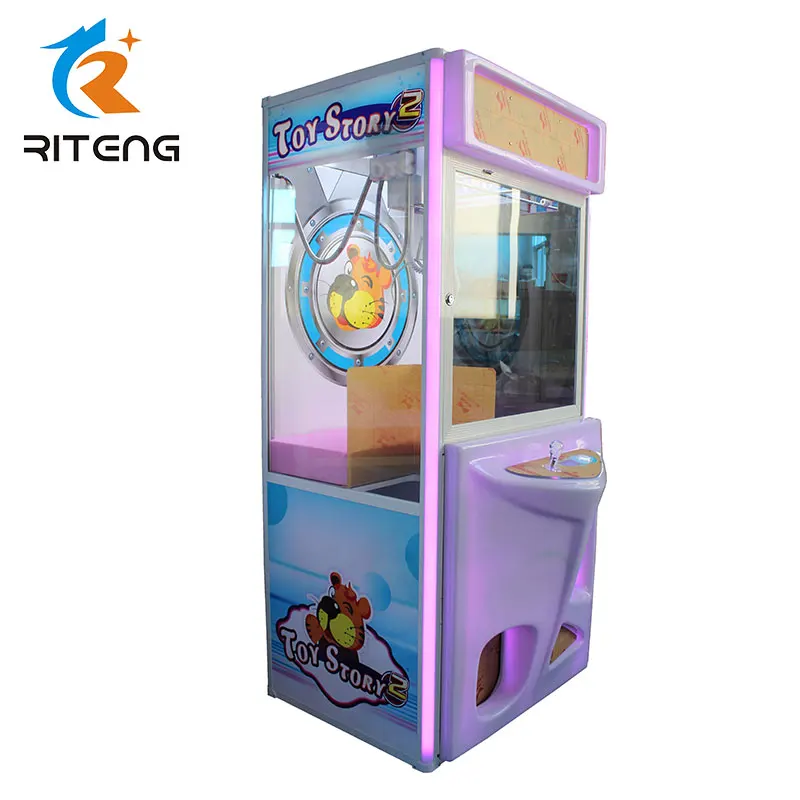
By 1994, its claw could be changed to fit the sizes and shapes of different prizes, and it had become a craze across Japan: arcades started dedicating entire floors to UFO Catcher cabinets-of which Sega had sold over 40,000, making it Sega's best-selling game at the time-and the term "UFO catcher" became synonymous with crane games in Japan.
#Crane grabber toy series
It had sold 10,000 cabinets by 1991, its popularity inspiring Sega's creation of the Dream Catcher in 1989 and the New UFO Catcher in 1991 while making the UFO Catcher series responsible for 90 percent of stuffed toy claw machine sales. Sega released their UFO Catcher claw machine in 1985 and made their first shipment of it in 1986. They gained popularity in Japan during the late 1970s, with crane games ranking among Japan's top ten highest-grossing electro-mechanical (EM) arcade games of 19. Japanese companies Sega and Taito began designing trolley-style claw machines in the 1960s. Global popularity In Asia Ī row of UFO catchers in Akihabara, Tokyo Bartlett became rich from the popularity of the machines and died in 1948. It was also known as the Nickel Digger, as it contained money, such as nickels and silver dollars, as prizes premium versions of the diggers had watches and cigarette lighters as prizes for adults. The Miami Digger, invented by American carnival operator William Bartlett of Miami and patented by him in 1932, improved upon the design of the Erie Digger by using an electric motor and allowing the crane to move around the entire box. During the Great Depression, designing intricate, Art Deco claw machines for hotels and stores became a lucrative endeavor.

Throughout the 1930s, it saw use as furniture in train stations, hotels, drugstores, cigar stores, and bus stations, where it was used to keep customers entertained. It found success at carnivals, partially because it did not require electricity like other carnival attractions.

It was invented in 1926, manufactured by the Erie Manufacturing Company, and named after the construction of the Erie Canal. The first patented claw machine, the Erie Digger, was a glass box containing candy and other small objects, a chute, and a coin-operated miniature steam shovel that moved in an arc, could be moved with a handle, and could be lifted and dropped into the chute using a hand crank. Illustration of an Erie Digger in a 1927 issue of The BillboardĬlaw machines are believed to have originated in the United States in the 1890s, when they were made to resemble the machines that built the Panama Canal. Claw machines can be set up to modify a claw's strength per turn based on how much money a given machine has received. Also in the 2010s, claw machines that could be remotely controlled via mobile applications or websites began turning up online. In the late 2010s, claw machines became immensely popular in South Korea and Taiwan as cheap entertainment due to both countries' slowing economies at the time, with the number of claw machine arcades in both countries rising into the thousands. Claw machines have made appearances in numerous video games, music videos, films, and television shows since at least the 1990s. By the 1980s, claw machines were ubiquitous in both the United States and Japan the success of Sega's UFO Catcher machines in the 1980s and 1990s inspired a claw machine craze in the latter country. It and its successor, the Miami Digger, were popular throughout the United States during the 1930s, specifically during the Great Depression, as carnival attractions and as furniture in public places. The earliest claw machines are believed to have been created in the late 19th century and inspired by the machines used to build the Panama Canal, while the first patented claw machine, the Erie Digger, was inspired by the creation of the Erie Canal and invented in 1926. Claw machines are also known as skill cranes, claw cranes, and crane games, and are known as UFO catchers in Japan due to the claws' resemblance to UFOs. They typically contain stuffed toys or other cheap prizes, and sometimes contain more expensive items like electronic devices and fashion accessories.

Modern claw machines are upright cabinets with glass boxes that are lit from the inside and have a joystick-controlled claw at the top, which is coin-operated and positioned over a pile of prizes, dropped into the pile, and picked up to unload the prize or lack thereof into a chute. E-Claws are considered amongst the most popular worldwide.Ī claw machine is a type of arcade game. A pair of claw machines created by Belgian manufacturer ELAUT.


 0 kommentar(er)
0 kommentar(er)
